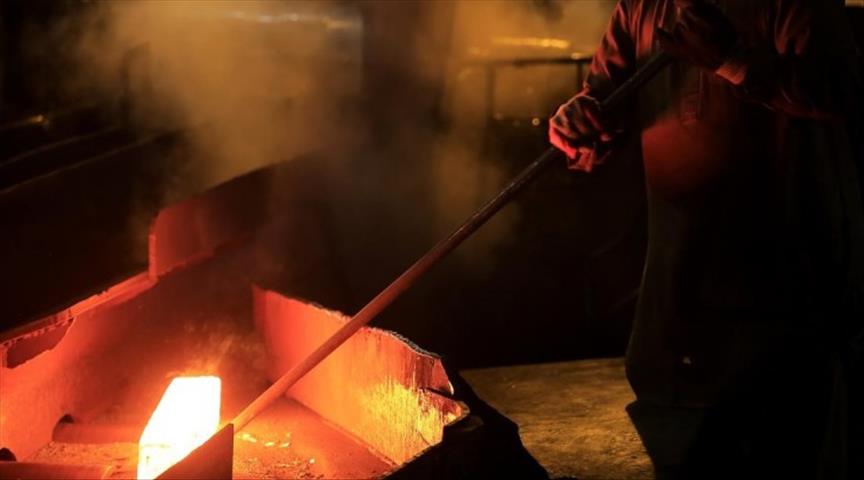Iron ore prices have seen a steady decrease, more than 60 percent since 2011, due to shrinking demand, according to mining engineering professor Ali Ihsan Arol from Middle East Technical University on Monday.
'Economic constrictions firstly affect raw materials. This affects iron and steel also. In the iron sector, companies consume stocks first, and that’s why they don’t buy new products. This causes a decrease in demand and decrease in demand lowers the price,' said Ali Ihsan Arol from Middle East Technical University, METU.
The 60 percent decline in iron ore since 2011 represents a greater reduction than oil prices, according to February's figures from the U.S. Geological Survey.
China, the largest buyer of iron ore, set the lowest economic growth target in more than 15 years on March 5 on the same day iron ore prices fell below $60.
The global price of iron ore has seen a decline from $192 per ton in 2011 to $140 in 2012, and a further fall to $137 in 2013 to the current spot price of $59 per ton while oil prices fell by around 50 percent in one year.
'China, Australia and Brazil change the price of iron ore because they are the biggest players of the market. Iron ore’s price rose with the growth of China. But China’s growth didn’t continue as expected,' Mehmet Sevket Erol, former iron production director of Turkish Steel company Erdemir said.
'When producers decrease their production level, iron ore prices will increase again,' he added.
Australia and Brazil are the largest iron ore producers and hold the largest portion of iron ore reserves while China is the biggest consumer.
American finance company Citigroup revised its price forecasting for iron ore for 2015. The company estimates iron ore prices for the third quarter of 2015 at $60 from their previous prediction of $78.
Brazil has reserves of more than 15 billion metric tons of iron raw material and more than 30 billion metric tons of crude ore. The country produced 320 million metric tons of iron ore in 2014.
In addition, one of the world’s largest mines are found in Brazil in the Vale’s Caracas iron mine which has approx. 7.2 billion cubic metric tons of proven iron ore reserves. The mine produces about 300 thousand metric tons of iron ore material per day.
China’s iron ore demand was 1.14 billion tons in 2013, which increased to 1.17 billion tons in 2014. The Asian country imported 800 million tons of iron ore in 2013 and imported 850 million tons in 2014.
Morgan Stanley from the U.S. estimates that around 175 million tons of iron ore - around 10 percent of last year's global trade, has been halted in this year's production because of the effect of low prices not seen since 2009.
By Murat Temizer
Anadolu Agency
murat.temizer@aa.com.tr


